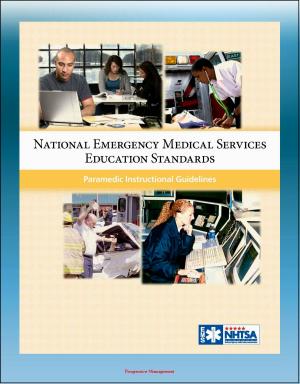Countering Weapons of Mass Destruction: A Preliminary Field Study in Improving Collaboration - WMD Counterproliferation and the Risk of Improvised Nuclear Devices (IND), Use of Additive Manufacturing
Nonfiction, History, Military, Nuclear Warfare, Social & Cultural Studies, Political Science| Author: | Progressive Management | ISBN: | 9780463363478 |
| Publisher: | Progressive Management | Publication: | May 30, 2018 |
| Imprint: | Smashwords Edition | Language: | English |
| Author: | Progressive Management |
| ISBN: | 9780463363478 |
| Publisher: | Progressive Management |
| Publication: | May 30, 2018 |
| Imprint: | Smashwords Edition |
| Language: | English |
This excellent report has been professionally converted for accurate flowing-text e-book format reproduction.
The proliferation of emerging and disruptive technologies such as additive manufacturing continues unabated. Such trends vastly increase the likelihood of a pernicious non-state actor acquiring weapons of mass destruction in the near future. In addition, these emerging novel threats have proved particularly vexing for the existing U.S. bureaucracies. Absent the major restructuring of the government, significantly higher levels of proactive inter-agency collaboration will be required to successfully respond to these grave challenges. In this project, we first operationalized a concept of collaboration in terms of increases in transparency, resource sharing, and interdependence across inter-agency actors. In other words, actors are deemed to be collaborating when they share information, make assets available to one another, and become jointly invested in (and responsible for) the resulting decisions. Second, we explored if the use of a formal collaborative process and the choice of venue would have significant impacts on the degree of collaboration observed. A preliminary field study conducted at the U.S. Embassy in Singapore confirmed our intuitions regarding increased collaboration, and provided the springboard for additional research, as well as for a number of policy recommendations.
CONTENTS * I. INTRODUCTION * A. WEAPONS OF MASS DESTRUCTION AND THE NEED TO COLLABORATE: DESCRIBING THE PROBLEM * B. THE EVOLVING PROLIFERATION THREAT * C. CWMD DEFINITIONS AND DOCTRINE * D. DISRUPTIVE INNOVATION AND PROLIFERATION * E. MARKET DISRUPTION * F. THE DISRUPTORS * G. ADDITIVE MANUFACTURING * H. WHY INTERAGENCY COLLABORATION? * I. RESEARCH STATEMENT AND QUESTIONS * J. SCOPE OF RESEARCH * K. OUTLINE OF PROJECT * II. EXISTING LITERATURE ON COLLABORATION * A. DEFINING COLLABORATION * B. THE ROLE OF INFORMATION * C. THE ROLE OF INTERESTS * D. OPERATIONALIZATION OF COLLABORATION * E. CONCLUSION * III. LESSONS GLEANED FROM THE MARKETPLACE ABOUT THE UTILITY OF A FORMAL COLLABORATIVE PROCESS * A. INSIGHTS FROM THE PRIVATE SECTOR * B. THE UTILITY OF INTEGRATED TEAMS * C. RECONSTRUING THE "INPUTS/OUTPUTS" OF COLLABORATION * D. INTRODUCING A FORMAL PROCESS: OPPORTUNITY ANALYSIS * E. THE IMPACT OF VENUE * F. RESEARCH DESIGN * G. CONCLUSIONS * IV. EXPLORATORY FIELD STUDY: INTERAGENCY OPPORTUNITY ANALYSIS * A. ACTIONABLE SOLUTIONS SPECIFIC TO THE SCENARIO * B. ASSESSING THE IMPACT ON EACH DIMENSION OF COLLABORATION * 1. Transparency * 2. Resource Provision * 3. Interdependence * C. OPPORTUNITY ANALYSIS CONCLUSION * V. CONCLUSIONS * A. RECOMMENDATIONS * B. WAY FORWARD * 1. Online U.S. Interagency Counterproliferation Collaboration Environment * 2. Institutionalization of Opportunity Analysis across the U.S. Interagency * 3. SOF Outreach to Interagency Partners
This excellent report has been professionally converted for accurate flowing-text e-book format reproduction.
The proliferation of emerging and disruptive technologies such as additive manufacturing continues unabated. Such trends vastly increase the likelihood of a pernicious non-state actor acquiring weapons of mass destruction in the near future. In addition, these emerging novel threats have proved particularly vexing for the existing U.S. bureaucracies. Absent the major restructuring of the government, significantly higher levels of proactive inter-agency collaboration will be required to successfully respond to these grave challenges. In this project, we first operationalized a concept of collaboration in terms of increases in transparency, resource sharing, and interdependence across inter-agency actors. In other words, actors are deemed to be collaborating when they share information, make assets available to one another, and become jointly invested in (and responsible for) the resulting decisions. Second, we explored if the use of a formal collaborative process and the choice of venue would have significant impacts on the degree of collaboration observed. A preliminary field study conducted at the U.S. Embassy in Singapore confirmed our intuitions regarding increased collaboration, and provided the springboard for additional research, as well as for a number of policy recommendations.
CONTENTS * I. INTRODUCTION * A. WEAPONS OF MASS DESTRUCTION AND THE NEED TO COLLABORATE: DESCRIBING THE PROBLEM * B. THE EVOLVING PROLIFERATION THREAT * C. CWMD DEFINITIONS AND DOCTRINE * D. DISRUPTIVE INNOVATION AND PROLIFERATION * E. MARKET DISRUPTION * F. THE DISRUPTORS * G. ADDITIVE MANUFACTURING * H. WHY INTERAGENCY COLLABORATION? * I. RESEARCH STATEMENT AND QUESTIONS * J. SCOPE OF RESEARCH * K. OUTLINE OF PROJECT * II. EXISTING LITERATURE ON COLLABORATION * A. DEFINING COLLABORATION * B. THE ROLE OF INFORMATION * C. THE ROLE OF INTERESTS * D. OPERATIONALIZATION OF COLLABORATION * E. CONCLUSION * III. LESSONS GLEANED FROM THE MARKETPLACE ABOUT THE UTILITY OF A FORMAL COLLABORATIVE PROCESS * A. INSIGHTS FROM THE PRIVATE SECTOR * B. THE UTILITY OF INTEGRATED TEAMS * C. RECONSTRUING THE "INPUTS/OUTPUTS" OF COLLABORATION * D. INTRODUCING A FORMAL PROCESS: OPPORTUNITY ANALYSIS * E. THE IMPACT OF VENUE * F. RESEARCH DESIGN * G. CONCLUSIONS * IV. EXPLORATORY FIELD STUDY: INTERAGENCY OPPORTUNITY ANALYSIS * A. ACTIONABLE SOLUTIONS SPECIFIC TO THE SCENARIO * B. ASSESSING THE IMPACT ON EACH DIMENSION OF COLLABORATION * 1. Transparency * 2. Resource Provision * 3. Interdependence * C. OPPORTUNITY ANALYSIS CONCLUSION * V. CONCLUSIONS * A. RECOMMENDATIONS * B. WAY FORWARD * 1. Online U.S. Interagency Counterproliferation Collaboration Environment * 2. Institutionalization of Opportunity Analysis across the U.S. Interagency * 3. SOF Outreach to Interagency Partners















